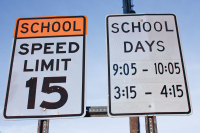Recreation rendezvous shines a light on WNC
Representatives from some of the biggest names in outdoor recreation will soon touch ground in Asheville for the 2010 Outdoor Industry Association’s Rendezvous.
Industry leaders from major brands like Patagonia, The North Face, REI, Merrell, Mountain Hardwear and many more will be flying through the Nantahala River on a whitewater rafting trip and exploring the Smokies by next week.
“The focus of the international outdoor industry will be on our region,” Sutton Bacon, CEO of the Nantahala Outdoor Center, which is hosting the conference.
Bacon and his peers say they hope the Rendezvous will encourage national and international businesses to open up shop in Western North Carolina.
“I think the WNC outdoor industry is certainly rolling out the red carpet,” Bacon said.
The major outdoor conference comes on the heels of Asheville being chosen as the site for a listening session as part of President Barack Obama’s America’s Great Outdoors Initiative earlier this year.
Related Items
“It’s a validation of the kind of mountain lifestyle that Western North Carolina offers,” said Mark Singleton, executive director of Cullowhee-based American Whitewater.
Christine Fanning, executive director of the Outdoor Foundation, said the Smoky Mountains are iconic for the outdoor industry.
WNC is home to the most visited national park in the country, and two of the most heavily visited national forests in the country, the Blue Ridge Parkway and the Appalachian Trail. The region also serves as headquarters to major outfitters and outdoor retailers in the country.
“If there is a hub of outdoor recreation in the east, Asheville arguably can lay claim to it,” said Frank Hugelmeyer, president and CEO of the Outdoor Industry Association.
Boost from recession
A major focus of the OIA Rendezvous will be to gauge the direction the U.S. outdoor industry is headed.
Since outdoor recreation tends to be more affordable than the typical vacation, the recession has actually driven more Americans outside than before.
At Mast General Store in Waynesville, employee Jay Schoon said the economic downturn has indeed brought a boom in business.
We’ve been having one of the best years, if not the best year, that we’ve ever had,” said Schoon, who has worked in the WNC outdoor industry for almost 20 years.
During tough economic times, the relatively low cost of outdoor activities holds clear appeal.
“When you look at hiking, all you need are a pair of shoes and a backpack,” Hugelmeyer said.
Fanning said connecting with nature can also provide physical, emotional and spiritual benefits and a healthy escape from the bad news of the day.
“People really are realizing outdoor recreation is something that can sort of disconnect you from the realities of today,” Fanning said.
Statistics also show that Americans are also opting for shorter outings. Rather than setting out for a week-long backpacking trip, they will take a day hike, mountain bike or go river rafting over the same period.
“The American is becoming a consummate sampler,” Hugelmeyer said.
Still, millions of Americans have yet to step into the great outdoors.
One point to drive across to these consumers, according to Fanning, is that reconnecting with nature doesn’t have to be an expensive or complicated affair.
“You don’t necessarily need to save up and have a once a year or once a lifetime trip to Yosemite,” Fanning said. “You can be right in your backyard.”
With the American population mostly gravitating toward cities and suburbs, Hugelmeyer said OIA hopes there will be great investment in urban parks, not just national parks.
Reaching out to youth
According to OIA, 90 percent of people who participate in outdoor activities now started between the ages of 5 and 18. Children who grew up camping, hiking and biking are more likely to continue as adults. Those who stayed inside as kids likely won’t take up backpacking as adults.
But OIA has found that there is a significant decline in the number of young people participating in outdoor activities. With more technological options for entertainment, youngsters are opting to stay inside. Kids cite lack of time, lack of interest and too much schoolwork as reasons for not getting outdoors more often.
Parents may have to shoulder much of the blame for that.
“Too many find it convenient to park a child in front of a TV set or computer screen,” Hugelmeyer said.
Melanee Lester, manager of Mast General Store in Waynesville, says that kids are often interested in the outdoors but don’t have the support of the parents.
Fanning and Hugelmeyer point out that more outdoor recreation for kids could provide tangible benefits, including better grades, closer family relationships and major health benefits. Those who appreciate the outdoors will also care about conservation and being good environmental stewards.
More outdoor activity could also curb the obesity crisis in the country.
“It’s a very small investment to head off what will be a very large medical bill later on,” Hugelmeyer said.
According to Fanning, the solution will come once parents are given the skills, information and confidence to schedule outdoor activities, and young people are empowered and inspired.
“At the end of the day, this is about parents and families taking personal responsibility to take their kids out,” Hugelmeyer said.
“For all of us who have a passion for the outdoors, we also have a responsibility to pass that passion to the next generation,” Fanning said.
By the numbers*
Participation
• 48.6 percent of Americans ages 6 and older participated in outdoor recreation.
• Americans made an estimated 11.16 billion outdoor excursions in 2008.
Spike in outdoor activities
• Hiking up by 9 percent
• Camping up by 7 percent.
• Backpacking up by 19 percent.
• Mountain biking up by 10.2 percent.
• Trail running up by 15.2 percent.
Youth less interested
• 6 percent drop in people ages 6-17 participating in outdoor recreation. This number has dropped by 16.7 percent in the previous 3 years.
Most popular activities by participation rate
1. Freshwater, saltwater and fly-fishing: 17 percent of Americans.
2. Car, backyard and RV camping: 15 percent of Americans.
3. Running, jogging and trail running: 15 percent of Americans.
4. Road biking, mountain biking and BMX: 15 percent of Americans.
5. Hiking – 12 percent of Americans.
*Statistics from the Outdoor Industry Association study conducted in 2009.









